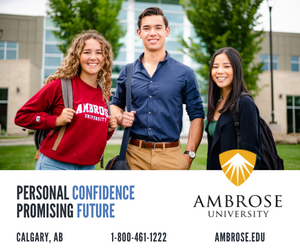2020 was an extraordinary year. While U.S. families are starting to plan a return to a more normal life, it is not yet clear what that new “normal” will look like, nor what the future holds for higher education. One thing is for sure, attitudes and perceptions around pre-college options for recent high school graduates are changing. Last year, many colleges and universities moved their curriculum online and stripped the campus experience from traditional sports, cultural or social opportunities. This caused many families to question the value – and price tag – of the college experience —leading to more deferrals and, what could be a broader culture shift in the U.S.
Add to that growing evidence that gap students perform better in college and are more likely to graduate in 4 years, and the math quickly works itself out: for the fraction of the cost of a year in college, gap students can develop new skills and accumulate valuable real-world experience without really “losing” time on average. Whether they choose to wait tables, study abroad, do service work or an internship, gap students have many rewarding options. The independence, maturity and soft skills they gain during that special time simply cannot be taught in a classroom, and they will be major assets in college and beyond. When they finally get to campus, gap students have a better grasp on who they are and what their goals and priorities should be. They make smarter and more assertive educational choices. They contribute and engage more fully in their classes.1
The benefit of taking a gap year is becoming more evident to a growing number of students and their parents, and this could transform our industry durably and for the better. Gap years have traditionally been characterized as a privileged experience for wealthy students who don’t know what they want to do. Today, gap programs are gaining broader appeal and are finally understood as a savvy pathway to college and – more broadly – adulthood.
In that context, gap year providers have a unique opportunity to shape new program options that can give students the flexibility they need to balance skill building and personal growth and be accessible to students from a wider range of backgrounds. Gap students want to be exposed to a wide variety of experiences, but they also need the space to breathe and self-reflect to grow as young adults.
This trend clearly shows in the rise of short-term gap programs across providers. While a traditional gap year used to put students on single track for one semester at a time, newer programs focus on 4 to 8 week long experiences to focus on a theme or a skillset. These programs are typically more affordable and give students room to customize the year as they please. They no longer need to choose between a domestic program and a study abroad semester, they can simply do both and combine experiences to adapt to their schedule, budget or goals. For instance, students could choose to improve their Spanish language skills for a couple of months in Spain or in the Dominican Republic, then return home to join a local service program, working with Spanish-speaking immigrant populations. They could also juggle an internship and a virtual language learning class before traveling abroad or pursue a passion project and break up their year with short stints abroad to see the world at their own pace. Depending on the individual and their circumstances, another option may see them consider alternating short-term programs with small jobs to finance their gap year experiences while gaining professional experience.
More and more providers also offer students to audit college-level classes while abroad to earn credit. It’s an option that students may choose to ease into the college experience, while exploring topics that they are curious about without committing, and at the same time earning credit toward a degree.
The possibilities are endless and gap counselors are in a great position to help recent high school graduates navigate this new landscape, taking advantage of shorter, richer, more accessible programs and to
set them up for success in college.
Certainly, 2020 has been a challenging year for study abroad organizations and the travel industry in general, but there has never been a more exciting time to be a gap year provider! The impact of our programs on young students is real and more thoroughly documented every year. The goal has always been to engage students in experiential learning that helps them develop workforce-ready skills: today’s employers cite2 written and oral communication, critical thinking, teamwork, and the ability to work independently as top skills for their workforce hiring. What better place than a gap year program to cultivate those skills?
As the world re-emerges from the pandemic, there are encouraging reasons to look forward to seeing more students boarding planes again and while assisting them with finding their own unique way to college.
1 https://www.gapyearassociation.org/data-benefits.php2 “Fulfilling the American dream” liberal education and the future of work. Association of American Colleges and Universities. Online survey, July 2018
By: Matt Redman

Matt Redman, Vice President, High School Study Abroad, Teach And Tefl
Matt Redman joined CIEE in 2009 as the Manager of Teach Abroad Programs. In 2014, CIEE launched the TEFL programs and began the Global Navigator Summer High School programs under his leadership. Matt has lived and worked in countries and states on four continents.

“Students at the Plaza de España in Seville, Spain”. 
“Gap year abroad participant in Madrid, Spain. Fall 2020” 
“Gap year abroad students visiting Carcassonne, France. Fall 2020” 
“Students on a guided tour in Seville, Spain, January 2021”










